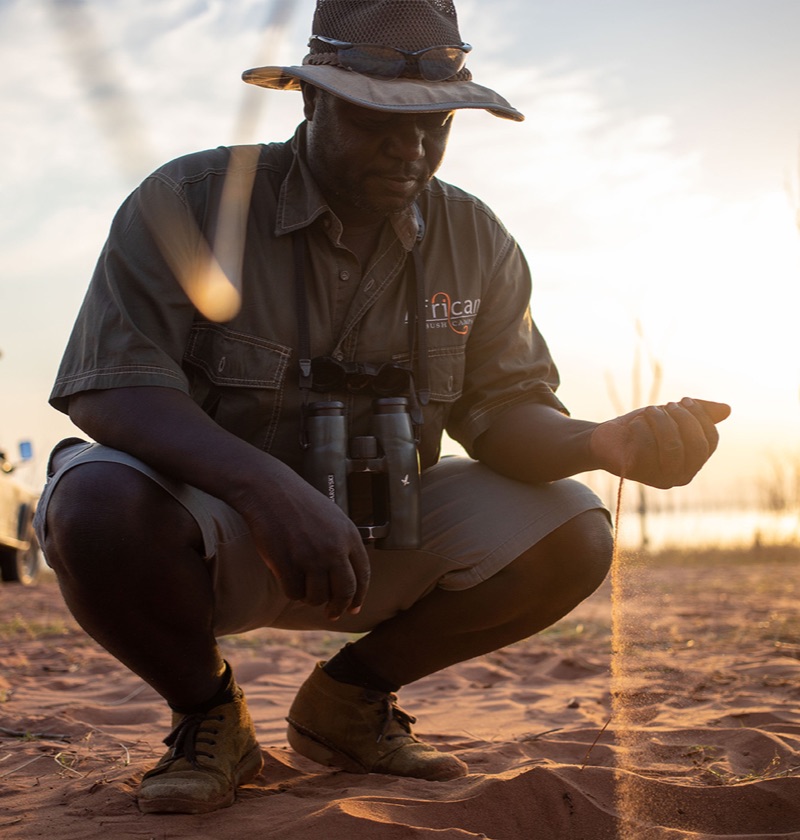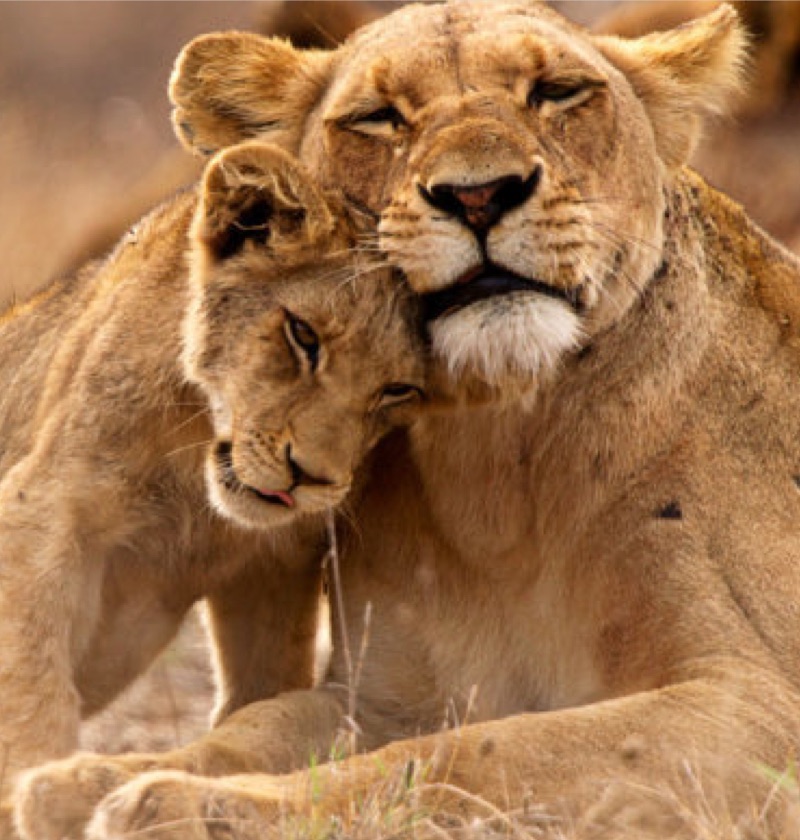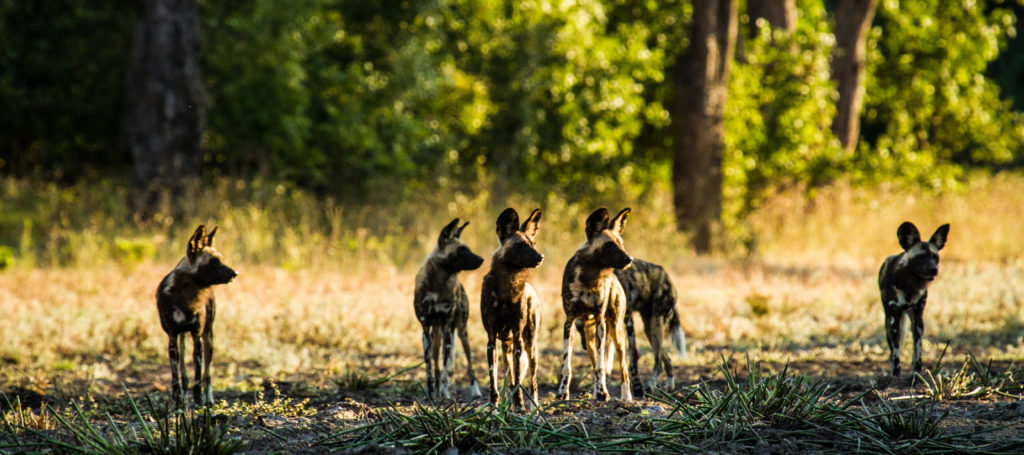FAQs- Frequently Asked Questions
Here are some frequently asked questions about African wild dogs:
What is an African wild dog?
The African wild dog, also known as the African painted dog or Cape hunting dog, is a medium-sized carnivorous mammal native to sub-Saharan Africa. It is known for its unique coat pattern of irregular patches of black, brown, white, and yellow fur.
How big are African wild dogs?
African wild dogs are typically about 75 to 110 centimeters (30 to 43 inches) long, excluding the tail, which adds an additional 30 to 45 centimeters (12 to 18 inches). They stand about 60 to 75 centimeters (24 to 30 inches) tall at the shoulder. Adult individuals weigh around 20 to 30 kilograms (44 to 66 pounds).
What do African wild dogs eat?
African wild dogs are primarily carnivorous hunters. They mainly feed on medium-sized ungulates like impalas and gazelles. However, they are opportunistic and may also prey on smaller mammals such as hares, rodents, and birds.
How do African wild dogs hunt?
African wild dogs are highly cooperative hunters. They live in packs and employ a unique hunting strategy. They work together to pursue and exhaust their prey over long distances, relying on their exceptional stamina. Once the prey is caught, they swiftly consume it, leaving little behind.
Are African wild dogs endangered?
Yes, African wild dogs are classified as an endangered species. Their population has significantly declined due to habitat loss, human-wildlife conflict, diseases transmitted by domestic dogs, and poaching. It is estimated that only around 6,000 individuals remain in the wild.
How do African wild dogs communicate?
African wild dogs have a complex vocal repertoire that includes various vocalizations like whines, chirps, and growls. They also use body language, such as facial expressions, ear postures, and tail movements, to communicate within their pack during hunting, greeting, or signaling alarm.
How many pups do African wild dogs have?
African wild dogs typically have litters ranging from 4 to 16 pups, although the average litter size is around 6 to 8. The alpha female gives birth in an underground den, and the entire pack contributes to raising and caring for the pups.
Where can African wild dogs be found?
African wild dogs are found in scattered populations across sub-Saharan Africa. They inhabit savannas, grasslands, woodland areas, and scrublands. Some of the countries with remaining wild dog populations include Botswana, Tanzania, Zimbabwe, South Africa, and Kenya.
What is a hyena?
A hyena is a carnivorous mammal that belongs to the family Hyaenidae. They are known for their unique appearance, including a strong build, sloping back, powerful jaws, and distinct vocalizations.
How many species of hyenas are there?
There are four extant species of hyenas: the spotted hyena (Crocuta crocuta), the brown hyena (Hyaena brunnea), the striped hyena (Hyaena hyaena), and the aardwolf (Proteles cristata). The spotted hyena is the largest and most well-known species.
Where are hyenas found?
Hyenas are found in various habitats across Africa and parts of Asia. The spotted hyena has the widest distribution, occurring in sub-Saharan Africa, while the brown hyena is primarily found in southern Africa. The striped hyena ranges from North Africa to the Middle East, and the aardwolf is found in eastern and southern Africa.
What do hyenas eat?
Hyenas are primarily scavengers but are also skilled hunters. They have a varied diet that includes carrion, small to medium-sized mammals, birds, reptiles, and even insects. They are known for their powerful jaws and ability to consume bones and tough hides.
Are hyenas dangerous to humans?
Hyenas are generally not considered a significant threat to humans. While they are large and powerful carnivores, they are typically not aggressive toward humans unless provoked or threatened. However, it is important to exercise caution and respect their wild nature when encountering them in their natural habitats.
Do hyenas laugh?
The vocalizations of hyenas are often described as “laughter.” It is a unique vocalization that can be heard during social interactions, such as feeding, greeting, or communicating with other members of their group. It serves as a form of communication and can convey different meanings.
How do hyenas live?
Hyenas are highly social animals that live in hierarchical groups known as clans. These clans can consist of several individuals, usually led by a dominant female. They have complex social structures, communicate through vocalizations and body language, and work together during hunting and raising their young.
Can hyenas be domesticated or kept as pets?
Hyenas are wild animals and are not suitable as domesticated pets. They have specific behavioral and dietary needs that cannot be met in a domestic environment. Additionally, in many countries, it is illegal to keep hyenas as pets due to their conservation status and potential risks to public safety.
Are hyenas endangered?
The conservation status of hyena species varies. The striped hyena is listed as near threatened, while the brown hyena is considered near threatened to vulnerable. The spotted hyena is the most abundant species and is currently listed as least concern. However, habitat loss, human-wildlife conflict, and illegal hunting can pose threats to their populations.















